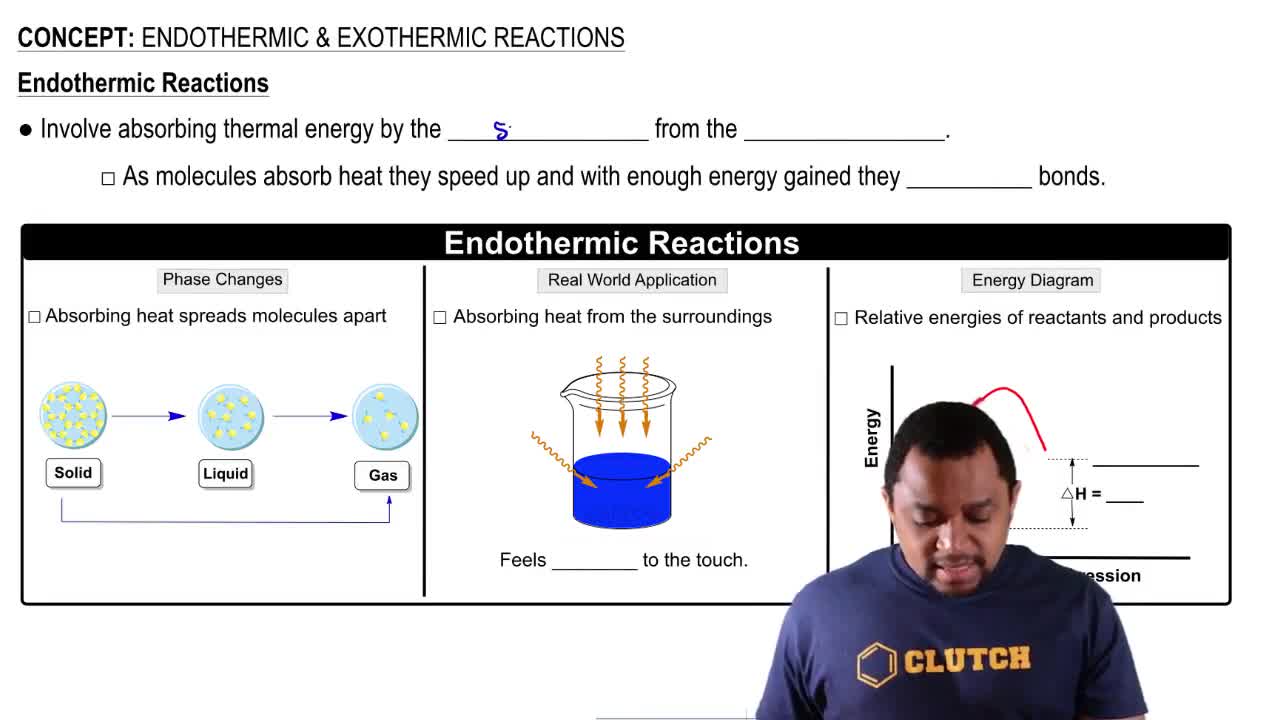Here are the essential concepts you must grasp in order to answer the question correctly.
Chemical Equilibrium
Chemical equilibrium occurs when the rates of the forward and reverse reactions are equal, resulting in constant concentrations of reactants and products. In the context of the reaction A + B ⇌ AB, the equilibrium position can shift based on changes in temperature, pressure, or concentration, affecting the amounts of A, B, and AB present in the mixture.
Recommended video:
Chemical Equilibrium Concepts
Le Châtelier's Principle
Le Châtelier's principle states that if a dynamic equilibrium is disturbed by changing the conditions, the system will adjust to counteract the change and restore a new equilibrium. For example, if the temperature of an exothermic reaction is increased, the equilibrium will shift to favor the reactants, while a decrease in temperature will favor the formation of products.
Recommended video:
Exothermic vs. Endothermic Reactions
Exothermic reactions release heat to the surroundings, resulting in an increase in temperature, while endothermic reactions absorb heat, leading to a decrease in temperature. The nature of the reaction can be inferred from the effect of temperature changes on the equilibrium position, where an increase in temperature favors the endothermic direction and a decrease favors the exothermic direction.
Recommended video:
Endothermic & Exothermic Reactions





